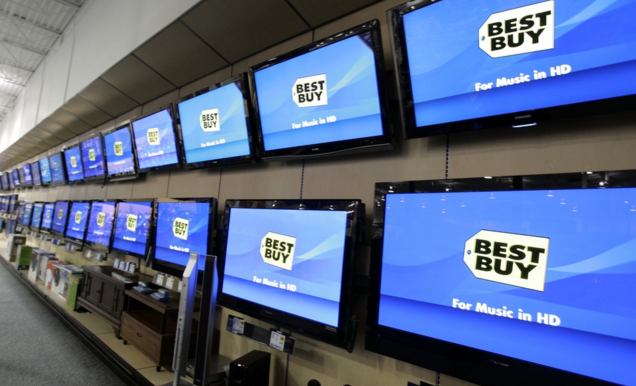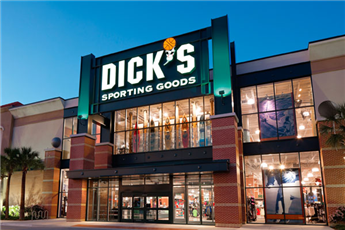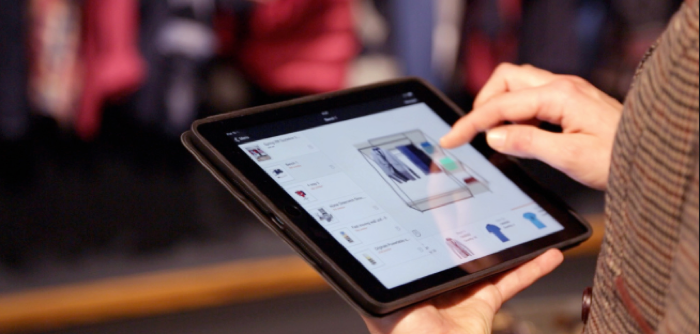I’d like to share some thoughts about how specialty retailers can grow faster using digital platforms. From my perspective, very few specialty retailers have proven they understand the digital world and everything it can offer. When employed correctly, digital can greatly increase customer engagement, brand loyalty, and sales. I believe most specialty retailers do not fully realize how digital platforms can help them grow very fast on all of the financial metrics that matter.
Before we go too far, let’s cover an important definition. Specialty retailers are defined as “retail businesses that focus on specific product categories, such as office supplies, men’s or women’s clothing, or carpet. It isn’t the product they sell that determines if a company is a specialty store but rather the breadth of their product offering.” Good examples of specialty retailers are pet stores (like Petsmart), office supplies stores (Staples), electronics stores (Best Buy), or in my current industry — party supply stores (Party City).
For this post, I’m going to focus on specialty retailers that have a large brick and mortar presence.
Specialty retailers have a unique opportunity to own a customer’s wallet and mindshare, but very few are investing in platforms and technology to deeply connect with consumers. And that’s a shame. In terms of revenue, the impact of digital connection is huge: 76% of consumers say they interact with products or brands long before they step into a brick and mortar store and it’s estimated that digital interactions will influence 64 cents of every dollar spent in retail stores by the end of 2015. That’s $2.2 trillion dollars.
So why are most specialty retailers behind on adopting digital platforms? There are five key reasons:
1) Most speciality retailers are run by Management teams that are experts in retail operations, merchandising, and inventory management, but they have very little background in consumer technology and its potential. These are “old-school” managers who are seasoned in retail, but are technology neophytes.
2) Digital teams are often separated from the core management team. One tipoff of this kind of thinking are specialty retailers that have a “Chief Digital Officer.” They assign digital as a focus for one manager, rather than being deeply integrated into the core competency of the entire Senior Management team.
3) Specialty retailers are measured by overall revenue and year over year same store sales growth. This can lead to tunnel vision, where each quarter is spent optimizing existing business and little investment is made in truly disruptive digital technology.
4) To date, most investments in digital are being spent on operation “fundamentals” such as mobile solutions to manage the supply chain and inventory, basic eCommerce fulfillment, and direct response marketing (e.g. coupons, cash-back rewards, search, email). These investments are easy to justify and relatively simple to understand for a brick and mortar specialty retailer.
5) Finance teams at retailers build pro forma models that calculate NPV (net present value) of digital investment projects on too short of a time horizon. Many digital initiatives take long-range thinking, and these investments must be given a long time horizon to succeed.
If you are an Executive at a specialty retailer, how do you overcome the current situation? What can you do to create meaningful and lasting digital connections with your customers? I’ve developed a blueprint for digital success at specialty retailers. There are five key steps, which I cover in detail below. If you follow these steps, you will culturally transform your organization and significantly accelerate your revenue growth and profits.
Let’s dive in….
STEP 1: Ensure Your Entire Management Team Eats, Sleeps, and Breathes Digital
The first step is to get the right people on the bus. None of the steps below are going to matter if you don’t have several people on your Management team that embrace digital as an agent of change for the whole organization. This is particularly hard for specialty retailers whose management teams have often been at the helm for more than a decade. As I mentioned above, one tipoff that your management team isn’t fully ready to embrace digital is if you put someone in a role called the “Chief Digital Officer.” This expertise shouldn’t be isolated as one person’s job. Instead, digital thinking needs to be the responsibility of every Executive in the company, starting with the CEO, President, and CMO.
While the idea of a Chief Digital Officer makes sense on the surface, it’s an ill-fated decision. The best companies of our time, such as Apple and Google, would never consider confining digital to one management role. As Michael Wolf wrote last year in the Wall Street Journal, “Increasingly, separating digital innovation into its own department is a sign of failed cultural change. It signals to the rest of the organization that digital is something on the side, and not part of the core of their business. At the same time, it fails to address the need for everyone in an organization (not just an elite few) to prepare for the perfect storm of search, mobile technology, the cloud, big data and social media. Finally, the mere idea of a centralized power is antithetical to a company’s need to succeed in a networked economy.”
If you have a Chief Digital Officer, put together a transition plan to assign that person to a new role in the company. Then start the process to ensure the entire Management team is deeply steeped in digital. This might mean replacing your Chief Marketing Officer with someone who has spent years in a technology company. Or it may mean asking your Chief Merchandising Officer to spend lots of time learning the ins and outs of eCommerce. The key is that your entire Management team must realize that digital is not a separate channel or just part of your direct marketing mix; it’s now an integral part of your customers’ lives.
STEP 2: Focus on Consumer Engagement as Much as Transactions
Most specialty retailers are so focused on transactions that they don’t focus on much else. Although they have tremendous amounts of data on customers’ purchases and buying habits, they lack an understanding of what’s actually motivating the customer to purchase. What is going on in the customer’s life that necessitates a visit to the brick and mortar store? Retailers may use data to try and infer things about their customers, but it’s not the same as directly building relationships with their customers. The heart of the opportunity is to understand how to deeply engage with customers and their motivations rather than guessing.
For example: a Sporting Goods store might know they sold four cans of tennis balls, but they don’t know much about the customer who purchased. Is it a mom buying for herself? Perhaps a tennis coach buying for her team? Or maybe it’s a dog walker buying tennis balls for his pack of dogs! With little information about the actual customer, this specialty retailer is in the dark. If retailers understood how to digitally connect, they would discover big marketing opportunities. Without a platform to connect digitally and engage, this specialty retailer doesn’t understand why the customer is in their store. To unlock the potential, specialty retailers need to focus on engagement as much as transactions. Let’s use an example to brainstorm engagement.
Let’s imagine that I’m thinking about going camping next month. There are several retailers that are interested in reaching me as a consumer. For example, the specialty retailer REI wants to sell me camping equipment and proper attire. Today, REI uses traditional direct marketing methods to reach me. They buy search keywords (such as “camping equipment”) to make sure they reach me when I’m researching tent brands.
I believe they are missing a big digital opportunity. Long before I need to buy a tent, I’ve searched for places to go camping.
REI could embrace digital engagement by offering a platform to find the best places to go camping in my area. Imagine a modern platform full of high resolution photos, video walkthroughs, with reviews that help me locate the best campground for me and my family. Here’s where the digital magic happens: as REI becomes my trusted source for campground information, I provide them with valuable information about why I need to make purchases. Now every marketing touch downstream can be tailored to my particular need. This is hyper-targeted marketing, enabled through digital engagement.
The moment a specialty retailer spends just as much time thinking about engagement as transactions, a world of possibilities opens.
STEP 3: Build or Buy the Best Digital Platforms to Match Your Customer’s Behavior
Now that we have the right Management team in place thinking about digital engagement, the next step is to build or buy the best platform to match to your consumer’s motivations and behavior. Specialty retailers have a unique advantage in this regard: the nature of specialty is they are focused on a specific activity. This lends itself well to platforms and apps that have a specific purpose. For specialty retailers, the key to unlock the potential is understanding the psychographic makeup of their customers. What are the activities, interests, or opinions that the consumer holds? How can a specialty retailer help with planning and purchasing decisions well before they step foot into the store? Let’s use a few more examples to illustrate how to do this:
Shoe Stores (e.g. DSW)
My wife loves Designer Shoe Warehouse (better known as DSW). She visits the store several times a year, especially as the weather changes and she wants new shoes. Other than sending coupons (through the mail and online) and offering cash rewards, this specialty retailer doesn’t engage with her in between the times she’s physically in the store. Their current app allows me to buy shoes, track my rewards, and find store locations – and that’s it. So how can they unlock deep customer engagement through digital?
Here’s a digital engagement idea: using her purchase history data, DSW could auto-magically create a virtual closet with a library of all the shoes she has purchased over the years.  With her virtual closet, she can organize the shoes that she has purchased for herself by style or occasion. With a fun and engaging mobile app, her virtual shoe closet would suggest certain shoes that she’s missing or new styles that she might like to buy. And with past shoe history data and wish lists, DSW can use push notifications to let her know that it might be time to replace her favorite Nine West flats, or that the cool ankle boots she’s been eyeing are on sale.
With her virtual closet, she can organize the shoes that she has purchased for herself by style or occasion. With a fun and engaging mobile app, her virtual shoe closet would suggest certain shoes that she’s missing or new styles that she might like to buy. And with past shoe history data and wish lists, DSW can use push notifications to let her know that it might be time to replace her favorite Nine West flats, or that the cool ankle boots she’s been eyeing are on sale.
Building on this idea, DSW could leverage this digital platform to create a community of shoe lovers. Customers could share their shoe collections on social media, compare their shoes with friends, or “favorite” shoes they really want. And there’s direct benefits for DSW too: the community could help DSW merchandisers quickly spot trends and emerging styles.
All of these activities would result deep customer engagement and more purchases. Most importantly, this new platform would enable DSW to stay connected with customers in between the times she comes into the store.
Electronics Stores (e.g. Best Buy)
I’m in the process of finishing the basement of my house. I decided recently that I wanted to buy a large screen television to hang in the new basement living space. I spent some time looking at the possibilities on Amazon, but I wanted to see the picture in-person before I made a purchase. So I went to my local Best Buy.
The sales person at Best Buy was helpful for my specific purchase, and I found what I needed. However, I believe they lost out on a much bigger opportunity to add value and create long-term digital engagement with me as a customer.
Imagine this: instead of simply offering me the specs and options of various televisions, what if they took a solutions approach, enabled by digital?  Using a handheld iPad and a proprietary Best Buy app, the sales person could quickly draw up a room that looks like my basement. Now Best Buy can show me everything they offer to make my basement a state-of-the-art movie room. Using the room designer app, Best Buy would inspire me with a sound system and home automation that would make me drool. During the process, the sales person easily captures my cell phone number so he can send me the room design and stay connected with me via SMS. Quickly, my simple TV purchase turns into an on-going, deep relationship with the retailer.
Using a handheld iPad and a proprietary Best Buy app, the sales person could quickly draw up a room that looks like my basement. Now Best Buy can show me everything they offer to make my basement a state-of-the-art movie room. Using the room designer app, Best Buy would inspire me with a sound system and home automation that would make me drool. During the process, the sales person easily captures my cell phone number so he can send me the room design and stay connected with me via SMS. Quickly, my simple TV purchase turns into an on-going, deep relationship with the retailer.
This digital solution also enables the sales person to have a more meaningful conversation about my motivations. With this same platform, Best Buy could offer suggestions for furniture and partner with a retailer to provide me with an offer. Granted, the furniture retailers would get the sale, but Best Buy could perhaps get a percentage of that sale — and more importantly — they would own the relationship with me from solution perspective.
Instead of all of these possibilities, I walked away from my electronics store visit with just a TV. And all Best Buy walked away with was a small profit.
Sporting Goods Stores (e.g. Dick’s Sporting Goods)
Here’s a case where a retailer might be better off to acquire a company rather than build a digital platform themselves. Dick’s Sporting Goods is in the specialty retail business of sporting equipment and clothing. What kind of digital platform would help Dick’s grow faster? How can we match the activities of Dick’s core customers to a platform that will drive engagement and lead to increased sales?
Here’s one idea: A significant percentage of Dick’s revenue comes from activity around organized sports. Anyone involved in high school or town league sports needs the kinds of products that Dick’s sells. Rather than waiting until a customer comes to the store, Dick’s could get directly involved in the activities that create the demand for purchases. What if Dick’s offered coaches a way to organize all of the activities around a sports team, and leveraged that data to help steer customers in their direction?
sports needs the kinds of products that Dick’s sells. Rather than waiting until a customer comes to the store, Dick’s could get directly involved in the activities that create the demand for purchases. What if Dick’s offered coaches a way to organize all of the activities around a sports team, and leveraged that data to help steer customers in their direction?
In this case, Dick’s should take a close look at acquiring a platform called TeamSnap. For the past six years, the folks at TeamSnap have built a fantastic platform for taking the hassle out of managing, coaching, and organizing team sports and groups (disclosure: I don’t know anyone at TeamSnap and I’ve never spoken with anyone on their Board – but David, Donna, Jason get in touch if you want to connect!). In a nutshell, the app helps coaches, players, and parents quickly and easily communicate about practices, games, etc. via text or email. It also lets coaches collect membership fees, track game stats, and more. This is the type of digital platform that a brick and mortar sporting goods store could use to deeply engage and retain its best customers. By providing this type of platform and investing long-term in digital, Dick’s would place their business in the heart of the activity around team sports.
STEP 4: Connect Your Digital Engagement Platform with Your Loyalty/Rewards Program
Retailers’ loyalty and rewards programs should do more than just give me points for my purchases and send me coupons. They should give me access to premium digital services that deepen my connection with a retailer. Here’s how to do this.
First, following the steps outlined above, a specialty retailer needs to carefully select the digital engagement platform. Before the investment is given the go-ahead, the specialty retailer must think about Premium features that are only available to loyalty members. Let’s go through the examples from above to articulate a way to tie this into a loyalty program:
DSW: Offer the “virtual shoe closet” for free to all customers, offer a Premium feature to connect with an online personal stylist for the best customers.
Best Buy: Offer the “room designer platform” for free to all customers, offer a Premium consultation hotline to loyalty customers.
Dick’s Sporting Goods: Offer the TeamSnap platform for free, offer the Premium features of the platform for your best customers (and their teams) as they buy more merchandise at the store.
When consumers participate in this type of “enhanced digital loyalty program” and share even more information, they can develop a deep relationship with the specialty retailer. This connection will increase the likelihood that these customers will buy shoes from that specialty retailer rather than some other store the next time.
STEP 5: Embrace Profitable New Digital Revenue Streams
Most specialty retailers measure their success based on foot traffic into their stores, merchandise revenue/profit, and same-stores sales growth. To fully leverage digital platforms, specialty retailers must be willing to embrace new digital revenue streams.
Brick and mortar specialty retailers are accustomed to very thin margins. With large overhead, even the biggest specialty retailers (who have billions of dollars in sales) achieve low profit margins. For every $100 of specialty merchandise that is sold in retail, EBITDA margins can be as low as single digits percentages. On the contrary, digital revenue streams are high profit margin and often recurring.
Let’s go back to TeamSnap to illustrate the point. As you can see from their plans and pricing chart, TeamSnap offers various tiers of service for their product. Each tier unlocks specific features, but the company has no marginal cost to offer a higher tier. Unlike physical goods, digital offers a high-margin product without additional costs. In addition, this high-margin digital revenue stream recurs every year.
At scale, digital services are a very profitable business. So how do you get to scale? This is where specialty retailers have a unique advantage. Dick’s Sporting Goods could turbo-charge TeamSnap’s growth through in-store promotions of their digital service (for example by email capture at checkout). And if they are part of the same entity, the digital revenue stream would flow right to the bottom line.
Right now, most speciality retailers consider eCommerce be “digital revenue.” That’s a disservice to the business. Instead, specialty retailers need to think about ways to increase revenue per customer by offering a digital service that matters to their lives. This high-margin, recurring revenue stream will pay off directly to the bottom line, and can have big implications on a specialty retailer’s overall financial performance. For public companies like Dick’s Sporting Goods, over time this could drive the stock price significantly higher.
KEY TAKEAWAY: I believe most specialty retailers are missing a huge opportunity to deeply engage with customers. To understand the opportunity that a digital platform provides, ask these key questions:
• Do you know what is truly driving purchase behavior in your specialty retail store? An event? A new home? A new dog?
• What was the customer doing 10 days before entering your store? What about yesterday?
• What digital services or apps did the customer use in and around the time she made a purchase at your store?
• What other problems can you help her solve that are related to her purchase?
The future is now. The best customers have embraced a digital lifestyle. It’s time that specialty retailers got on board.
Do you have thoughts or comments? I’d love to hear them. I’m grateful for your time – thanks for reading.


